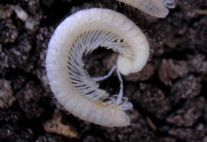Abstract
There is an infinite number of potential and useful classifications in biology, depending upon the context of the topic at hand. Organisms can be systematised according to size (e. g. small mammals vs. large mammals to highlight differences in physiology), diet (carnivores, omnivores, herbivores etc.), mating system (monogamous, polygynous, polyandrous etc.) and so forth. Each of these classifications is legitimate in its own right. However, there is one biological system that serves as a reference system for all other systems, and indeed for all of biology. It is this system that the biological discipline of systematics deals with, and since the acceptance of evolution (as opposed to divine creation) there has been a consensus that this system should reflect the phylogenetic relationships among taxa. Still, it took more than a century after Darwin until Willi Hennig introduced a truly scientific methodology of classification (Hennig 1966). The core concept that, for the first time, allowed for a rigorous and non-arbitrary designation of (supraspecific) taxa was monophyly (later sometimes called holophyly)—a natural (i. e. phylogenetically based) taxon may comprise only the descendants of a common ancestor and must at the same time comprise all of these descendants. While the first of these two conditions has met with general acceptance (i. e. polyphyletic groupings that are based on homoplasies are rejected), there has been an ongoing debate about the second one because many traditionally accepted taxa do not fulfil this condition. The classic textbook example is “Reptilia“ which excludes the birds although they are the (extant) sister group of the crocodiles. These paraphyletic taxa are real die-hards in taxonomy, because despite their arbitrariness they have been forcefully defended by many systematists, most famously by Ernst Mayr (see his debate with Hennig on cladistic analysis vs. cladistic classification; Hennig 1974; Mayr 1974). The general line of reasoning behind what Mayr called evolutionary classification is that evolution comprises both cladogenesis (the branching of lineages) and anagenesis (change through time without branching) and that classification should reflect both aspects or processes by taking into account phylogeny (cladogenetic aspect) and the degree of divergence between sister groups or the different divergence of sister groups from their common ancestor (anagenetic aspect), thus reflecting not only descent but also evolutionary or adaptive “grades“: „crocodilians are on the whole very similar to other reptiles, that is, they have developed relatively few autapomorph characters. They represent the reptilian ‘grade‘, as many morphologists call it.“ (Mayr 1981, p. 513). Yet, this is a concept that is impossible to define non-arbitrarily (see below). Nonetheless, in a recent article published in Zootaxa (Flegr 2013), Flegr again argues in favour of paraphyly, this time by linking it with punctuated evolution sensu Eldredge and Gould (1972). He even claims that the acceptance of paraphyla is a sine qua non for the survival of taxonomy as a scientific discipline: „Otherwise, we might soon have to say farewell (…) to the whole taxonomic system.“ (Flegr 2013, p. 298) This apocalyptic warning should not remain unobjected as it is a step back in the long-lasting process of emancipating biological systematics from the remnants of pre-evolutionary thinking.

